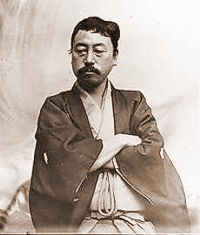What Every Matcha Lover Should Know
While the culture of powdered tea drinking originated in China during the Song Dynasty ( 960–1279 ), the tea ritual is a distinctly Japanese tradition. It has developed independently of its Chinese origins for nearly a millennium since the Buddhist monk Eisai brought Zen Buddhism and methods of producing powdered green tea from China.
The term "sado" was translated as "theism" and "tea ceremony" in a long English-language essay by Japanese scholar Okakura Kakuzo in 1906 as he attempted to explain the role of sado in the aesthetic and cultural aspects of Japanese life. For better or worse, this essay, "The Book of Tea" ( read it here for free ), established the term "tea ceremony" as the translation of chanoyu in English.
The tea ritual is structured in such a way that by observing several rules, conventions, and procedures, attention is paid to the most important things in our human and interpersonal existence. It is much more than just a formal ceremony for serving tea (matcha). The study of chanoyu is a way to cultivate an understanding and appreciation of beauty; and also helps us build better interpersonal relationships and live richer lives.
The most important aspect is not the fact that you drink tea in a tea ceremony to bring you peace. Rather, it is the fact that you actively, purposefully take the time to have tea with others in a place separate from the outside world. It is this setting and environment that instills awareness in your mind that helps each practitioner, personally, find peace in your current state of being. The tea itself is merely the medium (or excuse) through which you dedicate this special time. It is a spiritual experience that heightens your awareness of the world.
The tea ritual is not a performance
The tea ritual is not a performance, a show "performed" by the host for his guests. In essence, a tea occasion is a sociable gathering in which the guests participate and play a vital role. We must consider everyone present—the host as well as his guests, servants, etc.—as active participants in the ritual. A tea occasion is not simply organized by someone, for someone.
Instead, each participant has their own role to play. The host practices serving their guests selflessly, while the guests aim to cooperate with the host and respectfully work with each other to bring the whole occasion to a successful conclusion.
A tea occasion is more than just preparing tea alone
Originally, a tea gathering was a 4.5-hour occasion during which a small number of guests were entertained by their host. The occasion was initiated by a formal placement of charcoal in the fire pit to boil water for tea, followed by the 13-course kaiseki meal .
After the meal, guests briefly leave the tea room to stretch their legs and use the restroom. Once they return, the host has cleaned the space and may have made some adjustments to the display. This is when the climax of the gathering takes place: the serving of actual tea, or tea proper, thick tea, or koicha. Thick tea can be compared to a thick broth or soup in which a large amount of matcha tea powder is skillfully mixed with only a small amount of hot water.
A diluted version of thick tea is the frothy bowl of thin tea, or usucha, which is now also more well-known in the West due to the popularity of matcha. After the thick tea is served, guests may move to a larger reception room (if the host has arranged it) where they are served a final round of individual bowls of thin tea as refreshments.
Recently, these full tea occasions have become less common and the tea ceremony is often presented in its abbreviated form, showing only the final serving of fine tea.
Through tea we can learn to be present in the present moment
Mindfulness is at the heart of the practice. Each step of the process is carried out with care and full attention. This aspect is expressed when the host performs a tea service, taking care to clean the utensils again in front of his guests before taking them for use.
As a guest, one takes care to show appreciation for the hard work that went into creating the tea and express gratitude for making the occasion possible to the universe by first lifting the bowl of tea in thanks. Then, humility is expressed to the host by avoiding the front of the bowl, which usually has the most beautiful pattern, when drinking. In doing so, the guest indirectly acknowledges the host's wish to please them with the best of the best. Only after doing this do they take their first bite.
This is a simple summary of the various prescribed procedures that are observed by both the host and the guest. When we understand the meaning of each of the deliberate and formalized steps, we rediscover valuable rules of basic interpersonal courtesy. So is it necessary to go through the motions every moment of our lives? Perhaps not, but practicing them allows us to discover important mindsets that can also help us in our daily interpersonal interactions.
The tea ritual is a way to bring meditation into our daily lives
The ritual of drinking tea is highly therapeutic. In an age where we are bombarded with information, with so much to do in our busy daily lives, our minds crave time to calm down, relax, and "single-task." Solitary concentration is the most relaxing and therapeutic activity for the mind.
The tea ritual provides the practitioner with a tool to focus solely on the activity of preparing tea. In this way, other unnecessary thoughts are omitted, and the performance of the service creates a zone of calm. Good tea practitioners exert this energy through their movements and can draw guests into this energy. It is this spiritual tranquility that is the same mental state achieved during, for example, sitting meditation.





